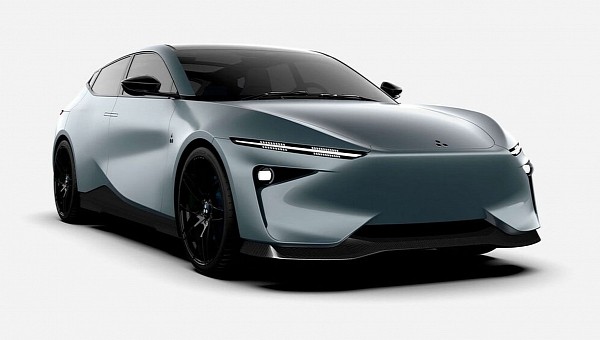The transition to the electric age has created an emulation in the automotive industry. More and more start-ups want to produce cars because building an electric car is simpler than a combustion engine car. One of these is Spanish start-up Liux, founded in 2021 and led by designer David Sancho Domingo and architect Antonio Espinosa de los Monteros.
Liux doesn't want to be just another electric car manufacturer but wants to build the most sustainable electric model. It would be made from renewable materials and use 3D printing for components.
The design is also very original but not for the rear doors that open in the opposite direction and the lack of a central pillar, but for the front end with no radiator grille and the extremely thin LED headlights. At the rear end, the taillights are also very thin in the form of a continuous strip. The Liux Animal looks a bit like the Jaguar F-Pace from the rear, except that the taillight area is sharper than on the Jaguar.
The Spanish start-up promises that the Animal will be made from composite materials derived from renewable natural fibers and natural resins. Also, by making components on 3D printing and limiting the number of components to those absolutely necessary, the number of components will be reduced by 25%. This should make Liux Animal even easier to dismantle and repair and also easier to recycle.
The interior is minimalist with no physical buttons. The driver has a display for the instrument cluster and a second portrait display for the multimedia system.
The Liux Animal uses a modular platform on which modular batteries can be mounted. Each battery module has 23 kWh and 2 or 4 modules can be fitted, with battery capacity ranging from 46 to 92 kWh. The promised maximum range is 600 km (373 miles).
The propulsion system uses a single rear axle engine developing 190 or 240 ps (187 or 237 hp). This gives a 0-100 km/h acceleration in just over 5 seconds for the 240 ps (237 hp) version and a top speed of 190 and 200 kph (118 mph and 124 mph), respectively.
The Spanish start-up is looking for a production partner in Spain and would like to produce 5,000 units in the first year and, from October 2024, increase production to 50,000 units per year. One of the investors is the Spanish leasing company Mobility OK, but the Spaniards need more funding.
They have already structured the model range in two versions: Habitat, with the small 190 ps (187 hp) engine, 300 km (186 miles) range at a price of 39,900 euros ($40,616) and Wild with the big 240 ps (237 hp) engine at 45,000 euros ($46,865). In both cases, they offer the option of a 92 kWh battery for an extra 9,000 euros ($8,642). The car can be reserved for a modest sum of only 200 euros ($192).













